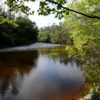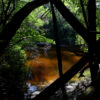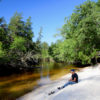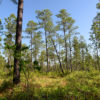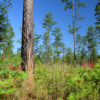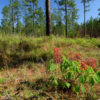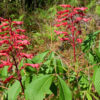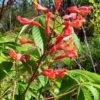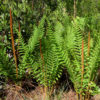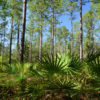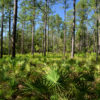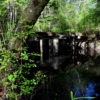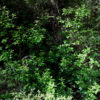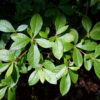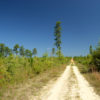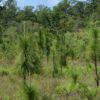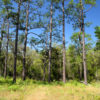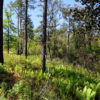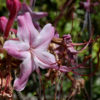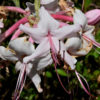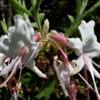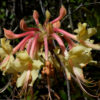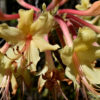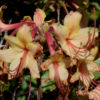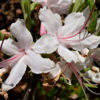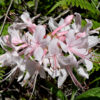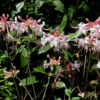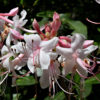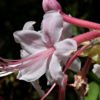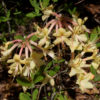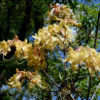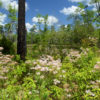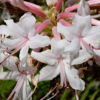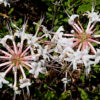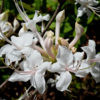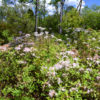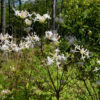We drove through the Blackwater River State Forest with several stops at different locations. First, we stopped at a spot on the middle Blackwater River to enjoy its white sandy beaches and crystal clear brown water.
Then we continued a little northwards to Kelly Spring Branch, a small blackwater tributary to the Blackwater River. Slightly elevated and a away from the water, the Pinus palustris dominated forests are very open here, as they are everywhere. The understory is periodically thinned every few years by mostly man-made fires. Pinus palustris does not mind this in all its growth stages, all other woody plants are burned to the ground. Among other species well adapted to this ecosystem, Aesculus pavia, a red flowering horse chestnut, caught our attention. It manages to bloom again as early as one or two years after a fire. We found R. serrulatum close to a destroyed bridge that had once crossed Kelly Spring Branch. Here around the rivers and creeks the land is somewhat lower and wetter. This is why the vegetation never burns here when fires are set or caused by lightning. Thus, many closely spaced deciduous trees are found here and there is a dense understory in contrast to the very open forests with Pinus palustris.
Still farther north is Danley Branch. However, this flows into Sweetwater Creek, which here runs parallel to the Blackwater River. At the Danley Branch bayhead, surrounded by Pinus palustris forests, R. canescens and R. austrinum grow together. The latter species even occurs here in its two color varieties, pink and yellow. To distinguish the pink R. austrinum from R. canescens, one has to look closely here. The former have glandular hairs on their young shoots, the latter do not.
The Goose Ponds are located further west on the other side of Sweetwater Creek. Masses of R. canescens thrive in their riparian zone.

